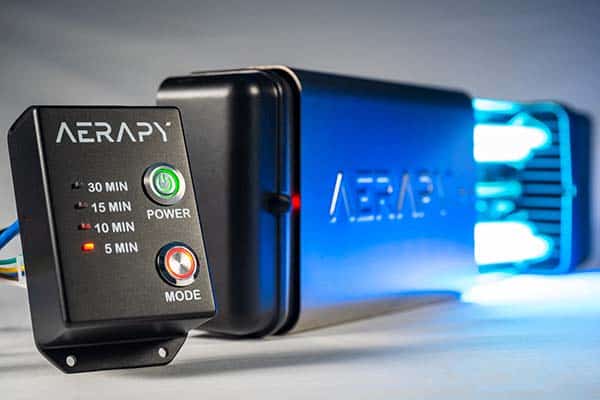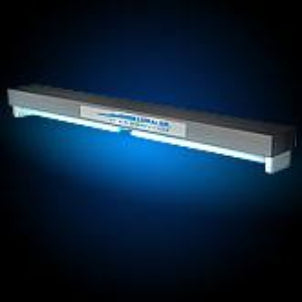UV Sanitation: The Cutting-Edge Modern Technology Changing Sanitation Practices
In the world of sanitation practices, one technology has actually emerged as a game-changer: UV disinfection. With its capability to eliminate damaging virus, this sophisticated technology is changing the way we approach sanitation and health. But just how does UV disinfection work, and what are the advantages it uses? From medical care settings to food processing, UV sanitation is making its mark in various industries. In this discussion, we will explore the intricacies of this transformative innovation and look ahead to its encouraging future.
Just How UV Disinfection Works
UV sanitation functions by using ultraviolet light to damage or suspend bacteria, supplying a chemical-free and highly reliable technique of hygiene. This modern technology uses the power of short-wavelength UV-C light, which can harming the DNA and RNA of microorganisms, therefore making them incapable to trigger and recreate harm.
The procedure starts with the installation of UV disinfection systems, which contain UV lamps that emit UV-C light. These lamps are tactically put in locations where microbial contamination is a concern, such as water treatment plants, healthcare facilities, research laboratories, and food handling facilities.
When bacteria are revealed to UV-C light, the photons penetrate their cell wall surfaces and reach the DNA and RNA within. The high-energy UV-C photons disrupt the genetic material by developing bonds in between nearby nucleotides, leading to the formation of thymine dimers. These dimers stop the microbes from duplicating, providing them safe.
UV disinfection is very effective against a vast array of bacteria, consisting of bloodsuckers, viruses, and germs. It is particularly reliable versus waterborne virus like E. coli, Giardia, and Cryptosporidium. UV disinfection is a chemical-free technique, removing the requirement for possibly damaging anti-bacterials and lowering the danger of dangerous disinfection spin-offs.
Benefits of UV Disinfection
UV disinfection uses countless benefits in the area of sanitation, making it an extremely favored approach for efficiently eliminating unsafe microorganisms. One of the crucial benefits of UV sanitation is its ability to supply a chemical-free solution. Unlike standard disinfection approaches that depend on chemicals, UV sanitation uses ultraviolet light to ruin the DNA of bacteria, making them not able to recreate and create infections. This not just gets rid of the demand for potentially harmful chemicals but additionally decreases the risk of chemical deposit on surfaces.

UV sanitation is likewise extremely flexible in its applications. It can be utilized in various settings, including hospitals, institutions, food handling facilities, and water therapy plants. UV sanitation systems can be conveniently incorporated into existing hygiene practices, providing an extra layer of protection against infectious conditions.
In addition to its efficiency and flexibility, UV sanitation is likewise eco-friendly. It does not produce any dangerous by-products or deposits, making it a lasting and secure technique for hygiene - uv surface disinfection. Additionally, UV disinfection needs marginal maintenance and has a long life-span, resulting in price savings in the future.
UV Sanitation in Health Care Setups
In medical care settings, UV sanitation has actually arised as a groundbreaking technique for effectively removing unsafe microorganisms. UV sanitation functions by sending out ultraviolet light at a certain wavelength that is dangerous to bacteria, viruses, and various other bacteria.
First of all, UV sanitation is a non-chemical approach, making it an eco friendly option More Info compared to standard sanitation methods that commonly entail using rough chemicals. The use of UV light gets rid of the requirement for chemical disinfectants, reducing the danger of dangerous residue or chemical direct exposure to both patients and healthcare workers.
In addition, UV sanitation is very reliable in eliminating a wide variety of bacteria, consisting of drug-resistant germs such as MRSA and C. difficile. It gives a trustworthy and regular disinfection process, making certain that all surface areas and equipment are completely sanitized, even in hard-to-reach areas.

UV Sanitation in Food Processing
The application of UV disinfection expands past health care settings and locates substantial value in the world of food processing. uv surface disinfection. UV sanitation innovation is ending up being increasingly preferred in the food sector due to its capacity to successfully get rid of dangerous pathogens and boost food security
Among the major advantages of UV sanitation in food processing is its capability to target a wide variety of microorganisms, consisting of mold and mildews, germs, and infections. By using UV light at details wavelengths, it is feasible to interfere with the DNA and RNA of these microorganisms, making them unable to trigger or recreate harm. This innovation can be related to various phases of the food processing chain, including surface area sanitation, devices sanitation, and water treatment.
UV sanitation supplies a non-thermal and chemical-free method of sterilizing food products. Unlike traditional sanitation techniques that count on chemicals or heat, UV modern technology does not leave any kind of residue or modify the preference, structure, or dietary worth of the food. This makes it a perfect option for sectors that require rigorous adherence to quality criteria.
Additionally, UV disinfection systems are easy to run and set up, requiring marginal maintenance. They can be integrated right into existing processing lines without creating considerable disturbances to the production process. Additionally, UV systems have a fast treatment time, permitting go for constant handling and decreasing downtime.
The Future of UV Disinfection

One area where UV sanitation is anticipated to make substantial developments is in the field of medical care. With the rise of antibiotic-resistant bacteria and the need for more efficient sanitation techniques, UV light has the prospective to play an essential role in minimizing healthcare-associated infections. UV disinfection systems can be utilized to sanitize surface areas, devices, and also the air in medical care centers, assisting to prevent the spread of dangerous microorganisms and enhance patient security.
Another sector that can take advantage of innovations in UV sanitation modern technology is the food sector. UV light has actually currently verified to be an efficient method for decontaminating food and lowering the danger of foodborne health problems. As technology improves, we can expect to see more affordable and effective UV sanitation systems being executed in food processing plants, ensuring that the food we eat is safe and without dangerous germs.
Conclusion
In conclusion, UV sanitation is a sophisticated innovation that is transforming hygiene practices in health care setups and food processing. By utilizing UV light to eliminate or shut off microorganisms, it uses various benefits such as efficiency, performance, and safety. With ongoing improvements in this area, UV disinfection holds wonderful prospective for the future of cleanliness, providing a reliable and sustainable remedy for preserving tidy and sanitary atmospheres.
UV disinfection is a chemical-free technique, removing the need for possibly damaging anti-bacterials and reducing the risk of damaging sanitation by-products.
Unlike conventional sanitation methods that count on chemicals, UV disinfection uses ultraviolet light to destroy the DNA of microorganisms, making them unable to recreate and trigger infections. Unlike standard sanitation methods that rely on chemicals or heat, UV technology does not leave any type of residue or change the preference, structure, or dietary value of the food. As modern technology boosts, we my explanation can anticipate to see extra reliable and cost-effective UV disinfection systems being executed in food processing plants, ensuring that the food we take in is risk-free and cost-free from dangerous microorganisms.
In verdict, UV sanitation is a cutting-edge technology that is changing hygiene techniques in medical care setups and food handling.